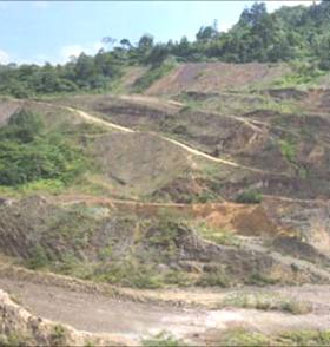The North Davao Mining Corporation (NDMC) mineral property is located in the province of Davao del Norte, in the southeastern part of the island of Mindanao, the main southern island of the Philippine Archipelago. The area has a long history of gold and copper mining. Since the 1940’s, various companies have carried out operations in the vicinity. NDMC itself had two major mining operations in the area, namely, the Amacan Copper and Hijo Gold Projects.
But following the EDSA revolution in 1985, NDMC was sequestered by the Presidential Commission on Good Government (PCGG) because of alleged Marcos-sponsored behest loans. The mining company’s account was then transferred to the Assets Privatization Trust (APT). The Amacan Mine was operated by the APT until 1992, but was eventually closed because of low metal prices, adverse economic conditions and internal management problems.
The NDMC property has been under the receivership of the government through its Privatization and Management Office (PMO) until it was transferred to the Philippine Mining Development Corporation (PMDC) on April 7, 2006 for proper disposal through public bidding. To facilitate the promotion of the property as an investment target, PMDC executed a Memorandum of Agreement with the Mines and Geosciences Bureau (MGB) for the purpose of conducting an assessment of the copper/gold potential of the property.
The NDMC asset consists of two partially-mined deposits, Hijo and Amacan, together with several other gold and copper-gold prospects. A total of seven (7) porphyry copper prospects and sixteen (16) meso-epithermal gold prospects were identified within the area of 20,237 hectares, easily making it one of the single most mineralized areas in the country.


